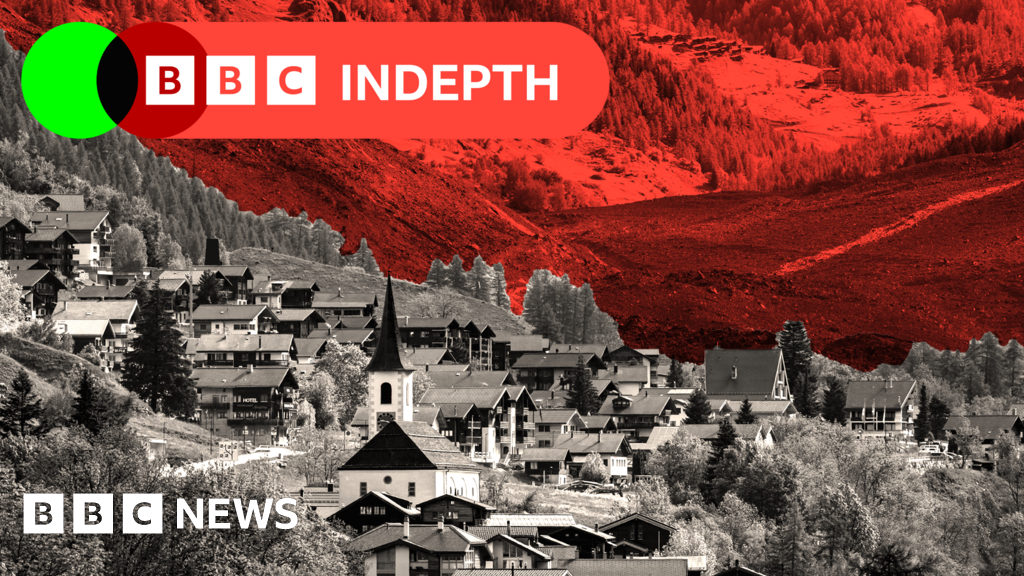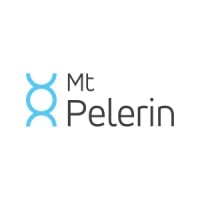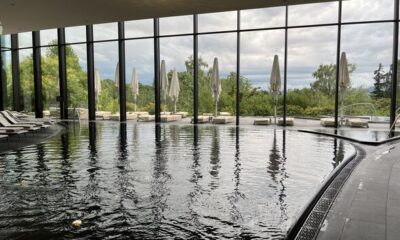Science
Melting Glaciers Displace Swiss Villagers Amid Costly Rebuild

The village of Blatten in Switzerland has been largely destroyed following a catastrophic landslide triggered by melting glaciers. The event forced the evacuation of its 300 residents, who lost their homes and livelihoods as part of a mountain collapsed into the valley. The disaster, which occurred two months ago, has raised urgent questions about the viability of protecting such vulnerable alpine communities.
In the aftermath, local mayor Matthias Bellwald, who is overseeing recovery efforts from a temporary office in the nearby village of Wiler, has emphasized the importance of rebuilding Blatten. He believes that the site could be cleared by 2028, with new housing potentially ready by 2029. However, the cost of reconstruction is expected to be substantial, with estimates reaching as high as $1 million (USD) per resident. Public contributions have raised millions of Swiss francs, and both the federal government and local authorities have pledged financial support.
Despite the outpouring of sympathy, many in Switzerland are questioning whether such efforts are worth the immense financial burden. The disaster has highlighted the increasing instability of mountain regions due to climate change, with geologists warning that as global temperatures rise, the risk of landslides will continue to grow. Approximately two-thirds of Switzerland is mountainous, and the country currently spends nearly $500 million annually on protective measures. A report from 2007 indicated that comprehensive protection against natural hazards could cost up to six times that amount.
The Alps are not only a stunning natural landscape but also a critical part of Swiss identity. Each valley possesses its own unique culture and heritage. Lukas Kalbermatten, who lost his family’s hotel of three generations in the landslide, expressed deep sorrow over the destruction of his village’s history and traditions. He recalls the charm of Blatten, with its winding alleys and ancient wooden houses, and the pride he felt sharing local dialect and customs with visitors.
Tragically, Blatten now lies beneath millions of cubic meters of debris, while the mountain remains precarious. Initially, residents believed their evacuation was merely precautionary, but Fernando Lehner, a retired businessman, described the shocking moment the landslide struck. “We knew there would be a landslide that day… but it was just unbelievable,” he recalled, emphasizing the terrifying and rapid nature of the event.
While some locals prefer not to discuss climate change, experts assert it played a significant role in the disaster. Matthias Huss, a glaciologist at the Federal Institute of Technology Zurich, noted that the thawing of permafrost contributed to the mountain’s instability. He explained how the retreat of glaciers diminishes their ability to support the mountains, leading to more frequent and unpredictable landslides.
The repercussions of this disaster extend beyond Blatten. In other parts of Switzerland, villages like Brienz have faced similar threats, leading to evacuations that have lasted for years. In the Bernese Oberland region, instability in rock faces has prompted preparation for possible evacuations, with heavy rainfall exacerbating concerns. The risks have already proven deadly; a rockslide in 2017 near Bondo claimed the lives of eight hikers.
Despite the risks, many Swiss people harbor strong emotional connections to their mountain heritage. An editorial in the influential Neue Zürcher Zeitung raised concerns about the sustainability of Switzerland’s wealth distribution model, which reallocates urban tax revenues to support these remote communities. The piece suggested that as climate change increases the frequency of such disasters, it may be time to consider relocating villages deemed too risky to inhabit.
The cultural significance of alpine villages cannot be overstated. Residents, like Kalbermatten, emphasize the importance of “heimat,” a concept encompassing deep-rooted connections to one’s childhood home and the surrounding landscape. For many, even those now living in urban areas, their sense of identity is still tied to the valleys where they grew up.
As the recovery operation in Blatten continues, a palpable determination remains among the residents and authorities. At the local restaurant in Wiler, clean-up crews and engineers come together, sharing stories of resilience and hope. Sebastian Neuhaus, commanding the Swiss army’s disaster relief battalion, underscores the importance of the task ahead. “We have to,” he insists. “There are 300 life histories buried down there.”
Ultimately, the challenges facing Blatten and other alpine villages highlight a broader dilemma: how to balance environmental realities with cultural heritage. As climate change reshapes the landscape, the future of these unique communities hangs in the balance, and the response will require both flexibility and a willingness to adapt to changing circumstances. The mountains, as residents like Bellwald and Kalbermatten acknowledge, will always be a part of their lives, for better or worse.
-

 World3 days ago
World3 days agoCoronation Street’s Shocking Murder Twist Reveals Family Secrets
-

 Entertainment4 months ago
Entertainment4 months agoKate Garraway Sells £2 Million Home Amid Financial Struggles
-

 Entertainment3 months ago
Entertainment3 months agoAnn Ming Reflects on ITV’s ‘I Fought the Law’ Drama
-

 Health3 months ago
Health3 months agoKatie Price Faces New Health Concerns After Cancer Symptoms Resurface
-

 Entertainment3 weeks ago
Entertainment3 weeks agoCoronation Street Fans React as Todd Faces Heartbreaking Choice
-

 World4 weeks ago
World4 weeks agoBailey Announces Heartbreaking Split from Rebecca After Reunion
-

 Entertainment6 days ago
Entertainment6 days agoTwo Stars Evicted from I’m A Celebrity Just Days Before Finale
-

 World6 days ago
World6 days agoKevin Sinfield Exceeds Fundraising Goal Ahead of Final Marathons
-

 Entertainment3 months ago
Entertainment3 months agoCoronation Street’s Carl Webster Faces Trouble with New Affairs
-

 Entertainment3 months ago
Entertainment3 months agoWhere is Tinder Swindler Simon Leviev? Latest Updates Revealed
-

 Entertainment4 months ago
Entertainment4 months agoMarkiplier Addresses AI Controversy During Livestream Response
-

 Science2 months ago
Science2 months agoBrian Cox Addresses Claims of Alien Probe in 3I/ATLAS Discovery





















